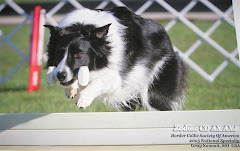Vector borne disease are those that infect another animal (dog, cat, human, etc) via the bite, sting, or ingestion of another animal or insect, the vector. We will start with Ehrlichia.
Ehrlichia organisms are rickettsial bacteria that are spread by ticks. That is the short explanation. Over the years these organisms have changed names as we find out more about them. Although there are several species of Ehrlichia the two main ones that transmit disease to dogs are E. canis and E. ewingii. These two organisms are spread by the Brown Dog Tick and the Lone Star Tick. Prevalence of Ehrlichia diseases are mostly limited to the geographic distribution of their respective ticks but are occasionally found outside these areas.
 |
| Brown Dog Tick |
 |
| Lone Star Tick |
Once the tick bites the dog, there are three phases of infection. One to three weeks after the bite there is an acute phase which is characterized by decreased platelets with or without associated bleeding, enlarged lymph nodes, lethargy, anorexia, and fever. More severe cases include respiratory distress, neurologic symptoms, stiffness or lameness. Most dogs recover from this phase with appropriate treatment and minor cases often clear on their own. Some dogs, without adequate treatment enter the subclinical phase in which they appear normal but may have a reduced platelet count or elevated inflammatory proteins on blood tests. The final phase is the chronic phase and includes bleeding, enlarged spleen and liver, anemia, enlarged lymph nodes, swelling, ocular changes, and more. In this phase, the dogs are generally very systemically ill.
Diagnosis is not terribly straightforward. The first step is identifying symptoms. Testing in a non-clinical animal is controversial and confusing (more on that later). In a symptomatic animal a quick first line test is the in-house 4DX snap test. This test only checks for E. canis. If there is any cross reactivity with E. ewingii it is unclear. This test checks for antibodies, which indicate exposure. If positive additional testing is needed to determine if the Ehrlichia is actually the cause of the disease. Possible tests include titers, PCR, and IFA. I won't go into the details of all these but just hit a few highlights. Titers, done over a period of time will show you if infection is getting better or worse (one titer does not do much good as it could be a subclinically infected dog clearing the organism on it's own). PCR gives a positive or negative but no indication as to the severity of disease. You can also, if you are lucky, see the organism in the blood cells while examining them microscopically.

Treatment at any phase consists of several weeks of Tetracycline, Doxycycline, or Minocycline. Blood or plasma transfusions or other stabilization may be needed in severe cases. Prognosis is good in the acute phase. Prognosis in the chronic phase is more guarded, especially if the bone marrow is heavily involved.
Prevention is aimed at tick control and prompt removal.
Now, about those 4DX positive dogs. Many veterinary clinics are using the Snap 4DX tests as their routine annual heartworm tests. These tests are great at actually diagnosing heartworms, but not so great at ehrlichia. As I mentioned above, this check only for exposure to the disease, not actual infection. So what do you do with those perfectly normal dogs that test positive (of which there can be many in endemic areas, trust me)? A few options are further investigate, ignore, or treat anyway. To further investigate we would run a CBC and if there are low platelets then either treat or run titers or PCR. You can also choose to ignore and monitor for clinical signs and then treat. A reasonable option since prognosis is excellent when treated in the early phases. You can also elect to treat based on the positive snap test result. However, this involves twice daily medication for weeks and with recent price increases could be cost-prohibitive in large dogs. Also, there is no proof that treating at this point will prevent actual disease. Anecdotally, we see lots of snap test positive dogs in the area where I work, but almost no dogs actually sick from the disease. I think any of the above plans are reasonable.
Ehrlichial diseases in cats are rare. They can occur in humans but is caused by a different organism. Direct transmission does not occur between dogs.




.jpg)



.jpg)


